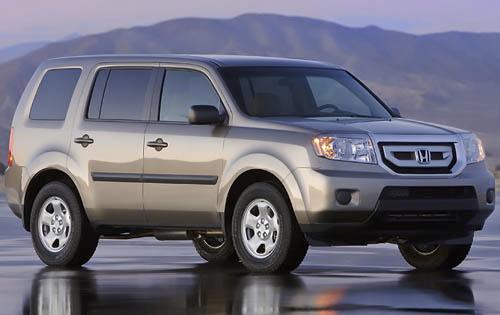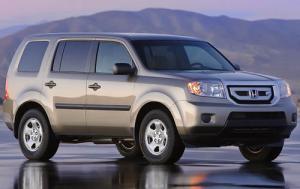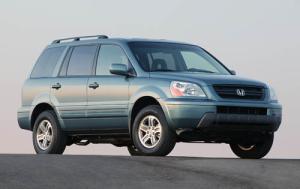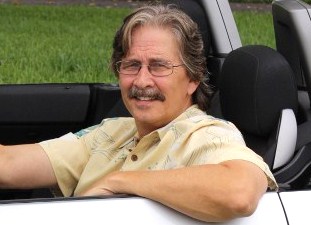Yet another Honda "quality" vehicle, we'd have to say the Honda Pilot is one of the most family-friendly SUVs in its price range. This is due mainly to its eight-passenger seating and an easy-to-maneuver midsize body.

And in today's very high-priced used car market, many shoppers are now looking for "older" models that have aged well as a way to save significant dollars. And Honda has a well-earned reputation for making some of the most reliable vehicles on the planet, including the Pilot.
This is not to say a Honda Pilot can't have mechanical problems as it ages. All vehicles do. It just means that for those on a tighter budget who want an older car that is more likely to be reliable and have a longer lifespan, carefully shopping for a well-maintained Pilot could put the odds in their favor.
So here, ...
- We'll do an overview of some earlier Honda Pilot generations, specifically those covering the 2003 - 2015 model years.
- Then we'll list possible mechanical issues that have been reported by some owners for each generation, because all vehicles have them, so they can be checked before buying one today.
- And then we'll summarize the overall pros and cons of an older Pilot worth consideration for potential buyers today.
But first, and very importantly ...
Things To Do When Considering An "Older" Vehicle
Locate Lower Mileage Vehicles: They are certainly out there to be found with careful and patient shopping. Be willing to drive a distance if you have to.
Vehicle History and Maintenance: Ask for the vehicle history report (CarFax or AutoCheck) as well as documented maintenance and repair records. If not provided by the Dealer or private seller, it's usually best to move on.
Pre-Purchase Inspection: Have the vehicle independently inspected before making a final decision. This usually will cost in the $150-$200 range but is well worth it given the potentially thousands in savings over the long term.
And My #1 Price Tip: Please, always get online price quotes at auto sites such as CarsDirect.com and Edmunds.com (both, actually), whether looking for a new or used car. Competition among dealers for your business does amazing things to prices, and it's so easy. It really does make a difference.
And quickly, while we're at it, my #2 Tip is to always know the up-to-date trade-in value of your current car. You can get a quick and surprisingly accurate one at Edmund's Trade-In Quotes.
It's free and just takes a couple of minutes. I think what helps its accuracy is the inputs will include either your plate# or VIN# followed by many simple, but specific, yes/no questions. It really focuses in on the detail of the specific vehicle.
Second Generation Honda Pilot (2009 - 2015)

Taking on more of a rugged look, the second generation Pilot wa offered in either front or all-wheel drive and in LX, EX, EX-L and Touring trims. Under the hood is a 3.5-liter V6 engine that pumps out 250 horsepower and 253 pound-feet of torque, mated to a 5-speed automatic transmission.
Extra room for adults was added making the third-row seat more useable. And with 87 cubic feet of cargo space, this Pilot is even more versatile in meeting family needs.
Overall, while competition in seven to eight passenger seating SUVs was growing, this Honda Pilot remains a top recommendation to families of four or more looking for a midsize model with a nice balance of space, comfort and economy ... not to mention the Honda nameplate renowned for reliability and above average resale value.
2009 - 2015 Honda Pilot Possible Mechanical Problems
The second-generation Honda Pilot generally has a solid reputation for reliability, but there were a few reported issues that some owners faced that should be checked before buying one today:
Transmission Problems: Some early models (2009-2011) had reported issues with the transmission, such as rough shifting or premature failure. Honda addressed some of these issues through recalls or extended warranties, but it's something to be aware of.
Engine Vibration: Some owners reported experiencing engine vibrations, particularly at idle. This could be due to various factors, including engine mounts or other components that might need replacement.
Catalytic Converter Failure: A few owners reported issues with the catalytic converters failing prematurely. Replacement of the catalytic converter can be an expensive repair.
More Car Buying Tips:
How To Get The Best Deal On A New Honda
This One Tip Will Save Thousands On Car Insurance
The Best Used Cars For Gas Mileage
Use Residual Car Value To Your Advantage
Brake Problems: Some drivers experienced premature wear on brake pads and rotors, which required more frequent replacements than expected.
Electrical Issues: There were occasional complaints about electrical problems, such as issues with power windows, door locks, or dashboard lights.
It's important to note that not all models or individual cars experienced these issues, and Honda addressed some of these through recalls or technical service bulletins.
Second Generation Honda Pilot Pros And Cons
2009 - 2015 Honda Pilot Pros
Cost Savings: Obviously, these Pilots are generally more affordable compared to newer models or other vehicles in the current market. You might get more value for your money with an older Pilot and lower upfront costs.
Reliability: Despite some reported issues, the Pilot is known for its overall reliability. Properly maintained models can offer dependable performance, especially if you find one that has been well cared for.
Depreciation: Since these models have already depreciated significantly, you won't experience the same rapid depreciation that newer cars often face.
Spacious Interior: It boasts a roomy interior with three rows of seats, making it suitable for larger families or those needing ample cargo space.
Comfortable Ride: The Pilot generally provides a smooth and comfortable ride, even on longer trips.
Good Safety Ratings: It scored well in safety tests, offering peace of mind for drivers concerned about safety features.
Decent Towing Capacity: It has a respectable towing capacity for its class, making it suitable for light towing needs.
2009 - 2015 Honda Pilot Cons
Potential Mechanical Issues: Some early models had reported transmission problems. While Honda addressed these issues, there might still be concerns with certain components due to age and wear. Getting a thorough inspection is crucial.
Higher Maintenance Costs: As cars age, they might require more frequent maintenance or repairs. Replacement parts might also be more expensive or harder to find for older models.
Fuel Economy: While not terrible, the fuel economy for the Pilot is somewhat average, especially in comparison to more modern SUVs in its class.
Outdated Technology: As it's an older model, its technology features might feel outdated compared to newer vehicles. The infotainment system and certain amenities might not match up to more current standards.
Third-Row Space: While the third row is spacious for kids, adults might find it a bit cramped, especially for longer journeys.
Road Noise: Some owners have reported that the cabin can be noisy, particularly at higher speeds or on rough roads.
First Generation Honda Pilot (2003 - 2008)

The original Pilots were all-wheel drive through 2005. Honda began producing the front-wheel drive option on both the LX and EX in 2006. And ever on the forefront, the Pilot's front-wheel-drive models have a cylinder deactivation feature that improves fuel economy during highway travel.
The all-wheel-drive has a Variable Torque Management system (called VTM-4) that has a center differential lock feature providing extra traction on dirt roads and in snowy, slippery situations ... the same as the one on the Acura MDX.
Actually, the Pilot has Acura MDX genes through and through. Honda borrowed heavily from its upscale division's cousin to create this midsize SUV.
It got its basic chassis and powertrain directly from the more expensive MDX. It inherited the same V6 engine and five-speed automatic transmission in addition to the all-wheel-drive system. While it was built on the same wheelbase as the MDX, it's still slightly shorter overall, as well as a bit taller and wider.
Available models include the already well-equipped base model LX and two upscale versions; the EX and leather-upholstered EX-L. All Pilot models were equipped with antilock four-wheel disc brakes and front side airbags.
The EX model's features include alloy wheels, power driver seat, automatic climate control, keyless entry, an upgraded audio system, and steering-wheel mounted audio controls.
Some used Pilot EX-L models can also be found with the optional navigation or rear DVD entertainment systems.
2003 - 2008 Honda Pilot Possible Mechanical Problems
The first-generation Honda Pilot, while generally reliable, had a few reported mechanical issues that should therefore be included in a pre-purchase inspection:
Transmission Problems: Some of the early models (specifically 2003-2004) experienced transmission issues such as rough shifting, slipping, or premature failure. Honda addressed some of these problems through recalls and warranty extensions. Later model years saw improvements in the transmission to address these concerns.
Rear Differential Noise: There were occasional complaints about rear differential noise that could lead to increased wear or eventual failure if not addressed.
Brake Wear: Some owners reported premature wear on brake pads and rotors, requiring more frequent replacement than expected.
Suspension Components: Wear and tear on suspension components, such as shocks and struts, could cause issues with ride quality or handling over time.
Timing Belt Replacement: The Pilot used a timing belt, and replacing it at the recommended intervals is crucial to prevent potential engine damage if it fails.
Catalytic Converter Failure: In some cases, the catalytic converters failed prematurely, which can be an expensive repair.
First Generation Honda Pilot Pros And Cons
2003 - 2008 Honda Pilot Pros
Cost Savings: First generation Pilots are generally more affordable compared to newer models or other vehicles in the current market. They offer a cost-effective option for those looking for a reliable SUV without breaking the bank.
Reliability: Despite some reported issues, the first-gen Pilot has a reputation for reliability. Well-maintained models can still offer dependable performance, especially if you find one that has been cared for properly.
Spacious Interior: It provides a roomy cabin with three rows of seats, making it suitable for families or those needing extra cargo space.
Decent Safety Features: While not as advanced as newer vehicles, the first-gen Pilot had respectable safety features for its time, providing a reasonable level of security for occupants.
Depreciation: Since these models have already undergone significant depreciation, there would be less ongoing depreciation than newer cars often face.
Decent Off-Road Capability: It has respectable off-road capabilities, making it suitable for light off-road adventures or challenging weather conditions.
Towing Capacity: The first-gen Pilot had a decent towing capacity, making it suitable for towing trailers or small boats.
2003 - 2008 Honda Pilot Cons
Potential Mechanical Issues: Early models had reported transmission problems and other issues. While some were addressed through recalls, there might still be concerns with certain components due to age and wear. Thorough inspection is crucial.
Higher Maintenance Costs: As vehicles age, they might require more frequent maintenance or repairs. Replacement parts might also be more expensive or harder to find for older models.
Fuel Economy: Compared to more modern SUVs, the fuel economy of the first-gen Pilot might be considered average or slightly below average.
Outdated Technology: Being an older model, its technology features might feel outdated compared to newer vehicles. Infotainment systems, safety features, and conveniences might not match up to current standards.
Third-Row Comfort: While spacious, the third-row seating might feel cramped for adults, especially on longer journeys.
Road Noise: The cabin might be noisier than desired, especially at higher speeds or on rough roads.
 By Josh Rosenberg
By Josh Rosenberg